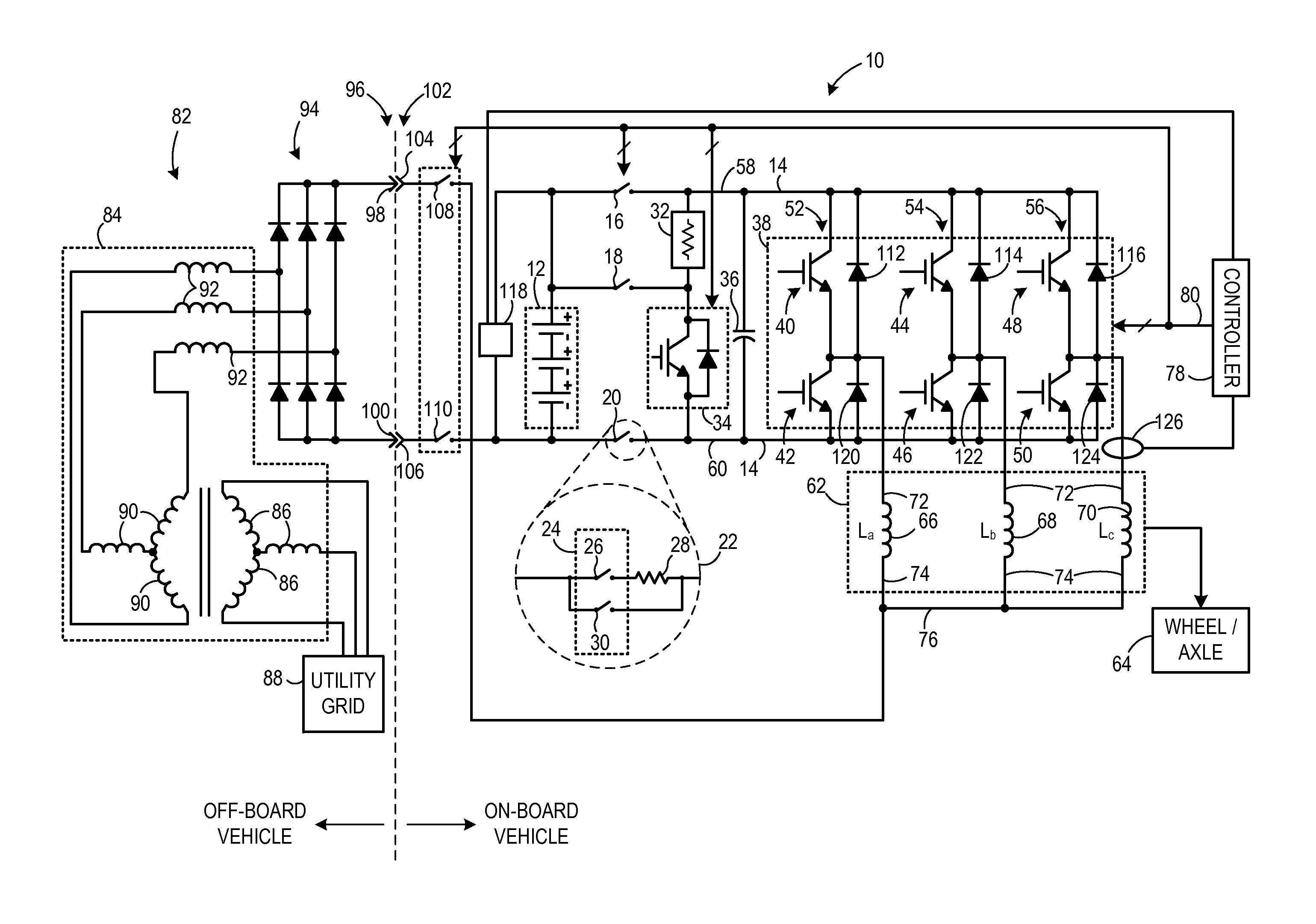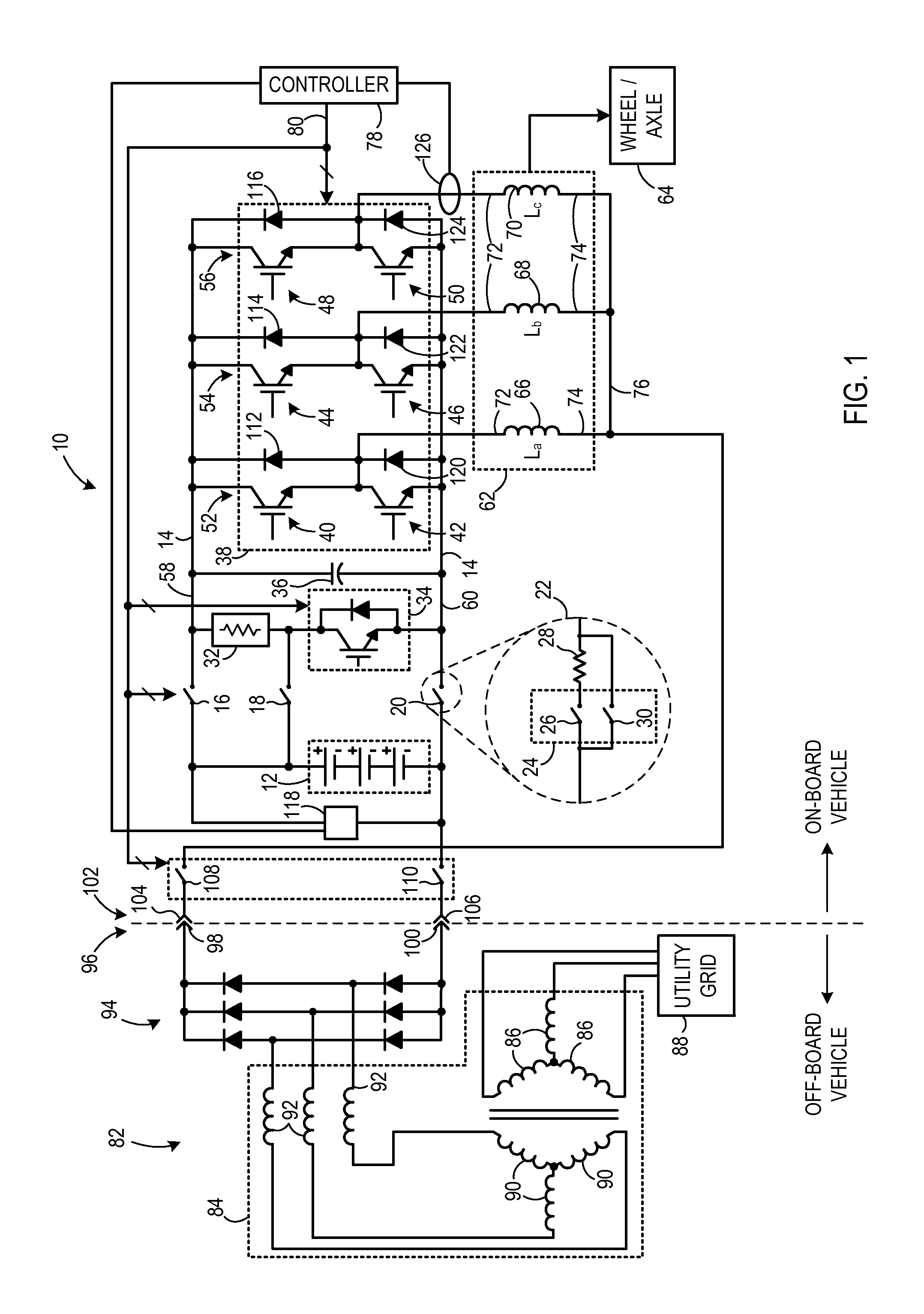Apparatus for transferring energy using onboard power electronics and method of manufacturing same
a technology of power electronics and equipment, applied in the direction of electric devices, charging stations, transportation and packaging, etc., can solve the problems of adding additional dedicated components, adding extra cost and weight to the vehicle,
- Summary
- Abstract
- Description
- Claims
- Application Information
AI Technical Summary
Benefits of technology
Problems solved by technology
Method used
Image
Examples
Embodiment Construction
[0016]FIG. 1 is a schematic diagram of a traction system 10 according to an embodiment of the invention. Traction system 10 includes a first energy storage device 12. In one embodiment, first energy storage device 12 is a high-voltage energy storage device and may be a battery, a flywheel system, fuel cell, an ultracapacitor, or the like. First energy storage device 12 is coupleable to a DC link or bus 14 via an array of contactors or switches 16, 18, 20. As described below, switches 16-20 are controlled during operation of traction system 10 in a motoring mode and in a recharging mode.
[0017]In one embodiment as shown in further detail at 22, switch 20 may include a switch array 24 coupled between first energy storage device 12 and DC bus 14. Switch array 24 includes a first switch 26 coupled in series with a pre-charge resistor 28. A second switch 30 is coupled in parallel with first switch 26 and pre-charge resistor 28. When switch 26 is closed and switch 30 is open, current flowi...
PUM
 Login to View More
Login to View More Abstract
Description
Claims
Application Information
 Login to View More
Login to View More - R&D
- Intellectual Property
- Life Sciences
- Materials
- Tech Scout
- Unparalleled Data Quality
- Higher Quality Content
- 60% Fewer Hallucinations
Browse by: Latest US Patents, China's latest patents, Technical Efficacy Thesaurus, Application Domain, Technology Topic, Popular Technical Reports.
© 2025 PatSnap. All rights reserved.Legal|Privacy policy|Modern Slavery Act Transparency Statement|Sitemap|About US| Contact US: help@patsnap.com



